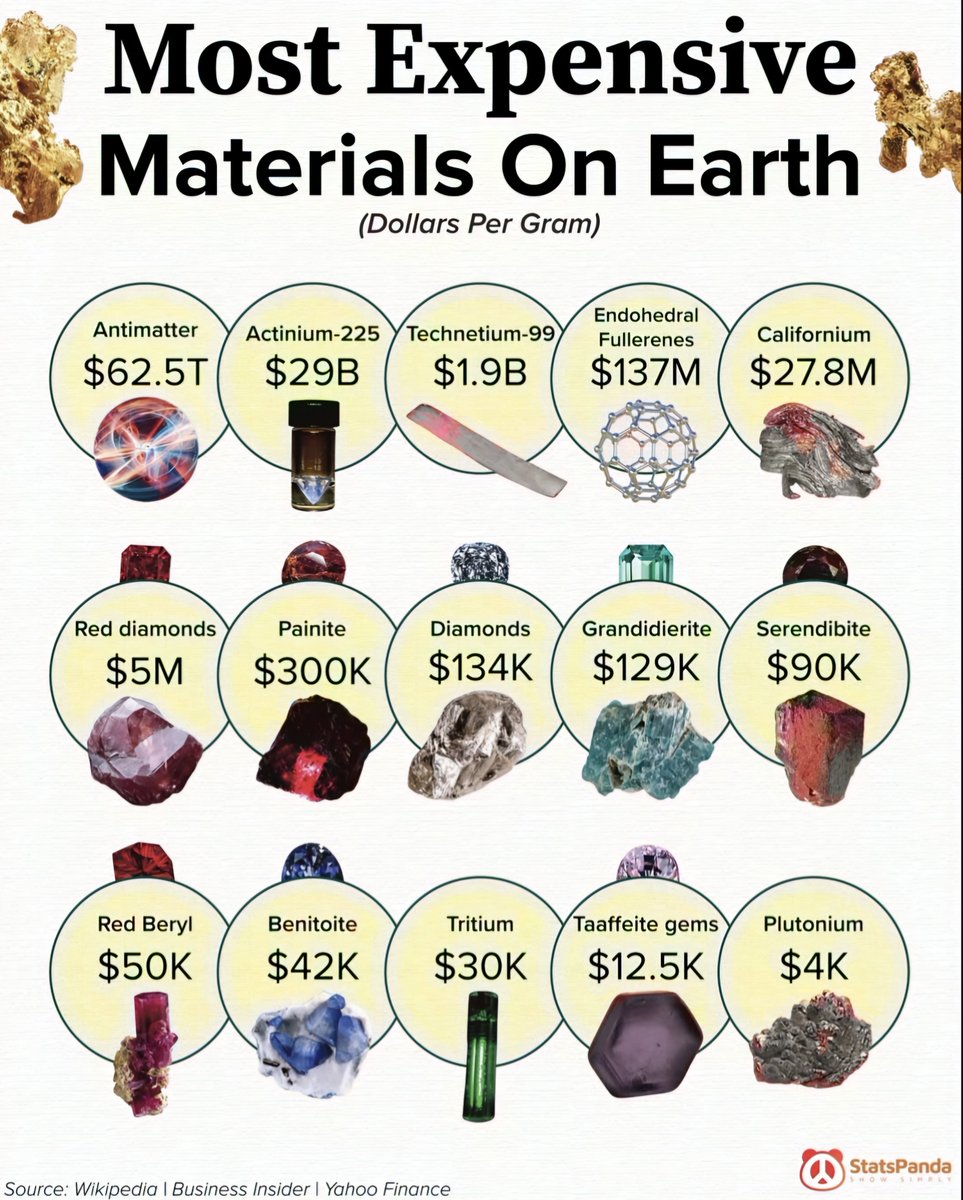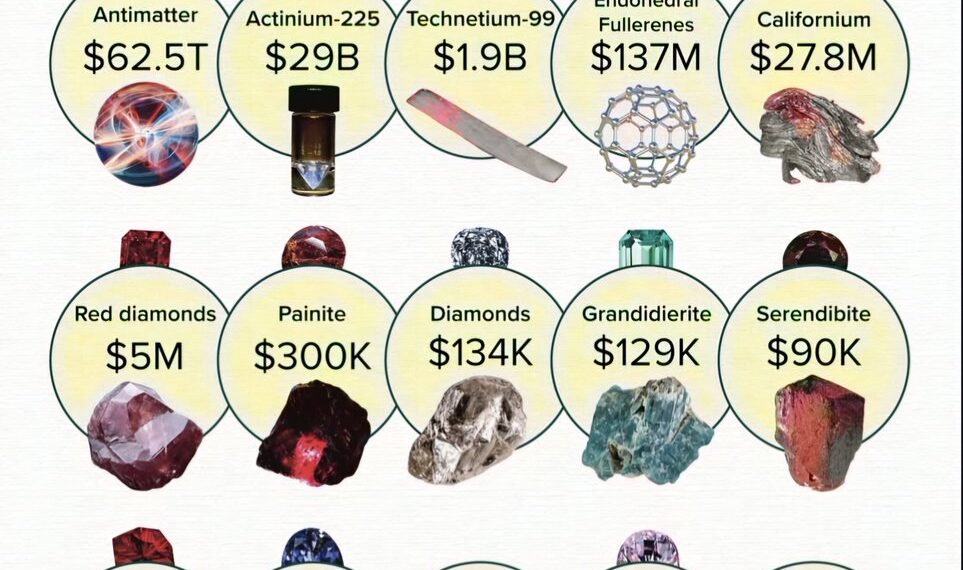Select Language:
15 Most Costly Materials Found on Earth in 2025

1. Californium – $27 Million per Gram
Californium, a highly radioactive element, is primarily used in nuclear reactors and scientific research. Its rarity and complex manufacturing process drive its sky-high price, making it one of the most expensive substances on Earth. Only specialized laboratories handle this element, and the tiny quantities available make it extremely precious.
2. Diamond – $55,000 per Carat
While diamonds are traditionally associated with jewelry, their price varies widely based on quality, size, and rarity. The finest Type IIa diamonds can fetch extraordinary prices due to their clarity and size. In 2025, rare colored diamonds, like pink or blue, are even more expensive, often costing tens of thousands per carat.
3. Antimatter – $62.5 Trillion per Gram
Arguably the most expensive substance, antimatter is produced artificially in particle accelerators. It has potential uses in future energy and medical therapies, but its production cost remains astronomical because it requires enormous amounts of energy and advanced technology. A tiny quantity could, theoretically, power entire cities or fuel space travel.
4. Tantalum – $430 per Pound
Tantalum is essential for electronics’ miniaturization due to its resistance to corrosion and excellent conductivity. Its scarcity and essential role in manufacturing batteries and capacitors in smartphones and medical devices push its costs higher. As demand surges, so does its market price.
5. Gold – $2,050 per Ounce
Gold’s timeless appeal, combined with its rarity and utility in electronics, jewelry, and financial reserves, keeps it among the most expensive materials. In 2025, volatile markets and increased investment have kept gold prices elevated, with some regions experiencing record highs.
6. Rhodium – $26,900 per Ounce
This rare precious metal is prized for its reflective properties and resistance to corrosion. It’s used heavily in catalytic converters for automobiles. Rhodium prices skyrocketed in recent years due to supply shortages and increased pollution regulations, making it a hot commodity.
7. Painite – $300,000 per Carat
Once considered one of the rarest gemstones in the world, Painite’s extreme rarity and unique color make it highly sought-after among collectors. Only a handful of specimens exist, which significantly increases its price.
8. Plutonium – $4,000 per Gram
Another radioactive element, plutonium is mostly used in nuclear weapons and reactors. Its scarcity and the risks associated with handling plutonium contribute to its high price, serving as a critical component in energy production and military applications.
9. Luxor Las Vegas Obsidian – $0.50 per Gram
While relatively affordable, some unique volcanic obsidian from famous locations such as Luxor has been sold for a premium, especially when crafted into art pieces or jewelry. Its rarity in certain regions raises its value.
10. Methane Hydrate – Unknown Price, but Potentially Expensive
This substance, stored in ocean sediments, could hold more energy than all other fossil fuels combined. Its commercial development is still in progress, but its potential as an energy source places it among the highly valuable natural materials, with estimated worth in trillions of dollars.
11. Pure Platinum – $1,060 per Ounce
Known for its durability and resistance to corrosion, platinum finds extensive use in automotive catalytic converters, jewelry, and industrial applications. Its scarcity increases its value, especially amid fluctuating industrial demand.
12. Electrum (Rare Gold-Silver Alloy) – Price Varies
Electrum, a naturally occurring alloy of gold and silver, was historically used in ancient coinage. Today, rare specimens fetch high prices, especially in collector markets, due to their historical significance and scarcity.
13. Painite – $300,000 Per Carat
This rare gemstone continues to be prized for its rarity. Fewer than 20 known specimens exist, making it one of the priciest stones in the world, mainly sought after by collectors and hobbyists.
14. Neptunium – $2.5 Million per Gram
A radioactive element used in scientific research, neptunium’s scarcity combined with its research importance leads to its high cost. Handling and storage are complex, contributing further to its expense.
15. Industrial Diamonds – $100,000 per Carat
Apart from their use in jewelry, industrial-grade diamonds are important in cutting and drilling applications. High-quality industrial diamonds are rare and expensive, especially for specialized uses in high-precision manufacturing.
These materials demonstrate the fascinating range of Earth’s most precious substances, shaped by rarity, utility, and technological complexity. As our technological landscape advances, some of these materials may become more accessible, but many will likely remain incredibly valuable for years to come.







